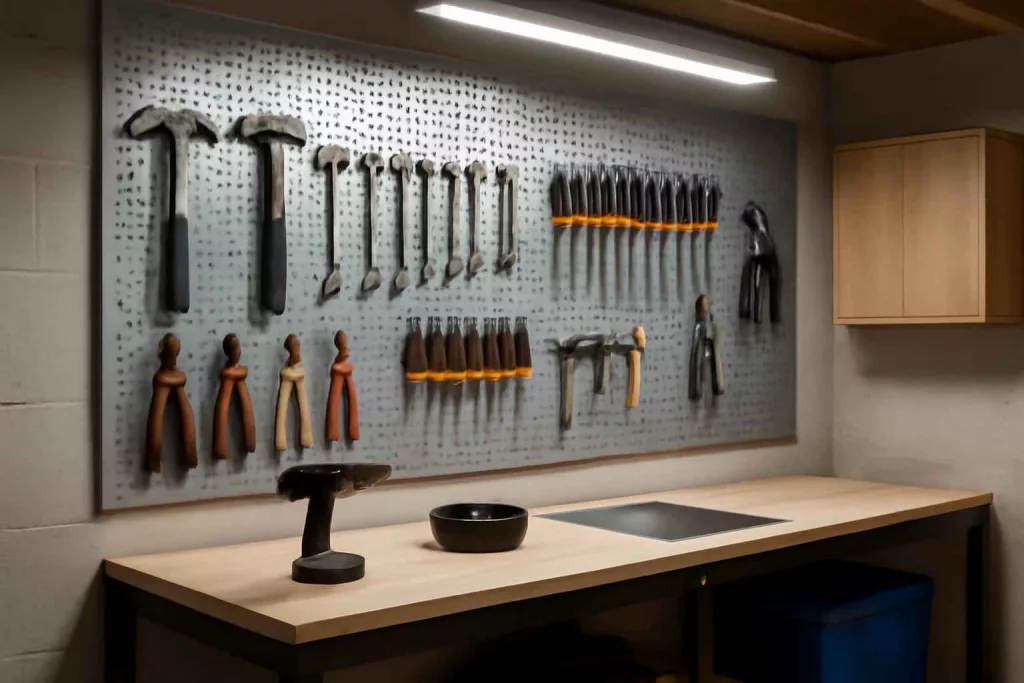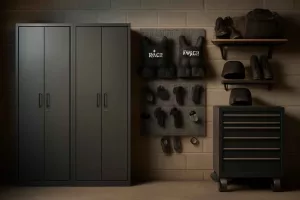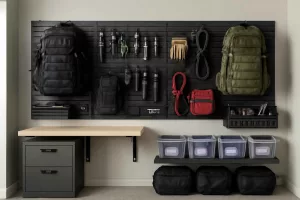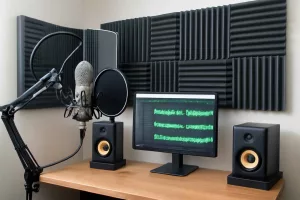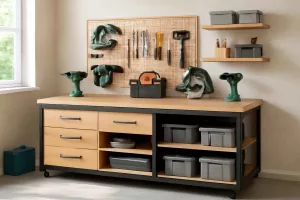At the heart of every well-organized garage workshop lies a reliable pegboard system. Wall-mounted pegboard systems offer DIY enthusiasts and professionals alike a versatile solution for keeping tools visible, accessible, and neatly stored. Whether you’re tackling woodworking projects, automotive repairs, or general home maintenance, having a designated spot for every wrench, screwdriver, and clamp saves time and reduces clutter. In this comprehensive buying guide, we’ll explore why wall-mounted pegboard systems are a must-have for any garage, break down the different styles and materials available, highlight key features to consider, showcase the top-rated systems on the market, and share expert tips for installation and upkeep. Ready to transform your workspace? Check the latest wall-mounted pegboard systems on Amazon here.
Why Choose Wall-Mounted Pegboard Systems for Garage Organization?
Garage workshops often suffer from space constraints and disorganized tools scattered across benches, floors, and drawers. Wall-mounted pegboard systems solve this problem by utilizing vertical wall space and converting it into a customizable storage wall. Instead of rummaging through cluttered drawers or stacking heavy toolboxes, you can glance at your pegboard and instantly locate the tool you need. This setup not only improves workflow but also reduces the risk of tripping over misplaced gear.
Unlike fixed cabinetry that can be bulky and expensive, pegboard panels are lightweight, cost-effective, and easy to install. You can tailor the layout as your tool collection grows, moving hooks, bins, and shelves around with minimal effort. Pegboard panels also allow for a clean, professional appearance—tools become part of the workshop decor rather than hidden behind closed doors. If you need more targeted storage for small parts like screws, nuts, and bolts, check out our guide on magnetic parts trays for workshop organization.
Types of Wall-Mounted Pegboard Systems
When evaluating wall-mounted pegboard options, consider factors such as material, hole pattern, panel size, and customization capability. The three primary types include metal, wood (or MDF), and modular plastic pegboards.
Metal Pegboards
Metal pegboards are the most durable option, often made from steel or aluminum with a powder-coated finish. They can support heavy hand tools and power tools without bending or warping. Most steel panels use a universal 1-inch hole spacing, which fits a wide range of hooks and accessories. Look for rust-resistant coatings to maintain appearance in humid environments.
Wood or MDF Pegboards
Wooden pegboards offer a classic look that blends well with traditional workshop aesthetics. They are typically made from plywood or melamine-coated MDF. While less heavy-duty than metal, they can support moderate loads when properly anchored into studs or backed with plywood. Wood panels can be painted to match your workshop color scheme.
Modular Plastic Pegboards
Plastic systems are lightweight and easy to cut to size, making them ideal for DIYers who want a quick installation over drywall. Plastic pegboards typically feature slotted or perforated designs and often come with matching plastic hooks. While not as robust as steel, they resist moisture and are suitable for light- to medium-duty storage.
For a complete storage solution, pair your panel with robust wall-mounted tool cabinets to keep bulkier gear out of sight.
Key Features to Look for in a Pegboard System
Material Strength and Weight Capacity
Heavy-duty steel pegboards typically support 50 pounds or more per square foot, making them perfect for storing power tools and heavy hand tools. Wooden pegboards offer around 10–20 pounds per square foot if mounted securely. Always check the manufacturer’s weight rating and choose panels with a rust-resistant or water-resistant finish for longevity.
Hook and Accessory Compatibility
Standard pegboards use a universal hole pattern, but some brands deploy proprietary holes that only fit their accessories. Opt for open-hole designs to ensure compatibility with a wider range of hooks, baskets, shelves, and tool-specific holders. Specialty hooks—like angled hammer holders or multi-tiered wrenches racks—can boost efficiency.
Ease of Installation and Expansion
Look for panels that come with mounting hardware and clear instructions. Some kits include spacers to allow hooks to fully engage behind the panel. Modular designs let you hook panels together seamlessly for large coverage areas. If you anticipate expanding your setup, choose panels with interlocking edges for easy alignment.
Customizing Your Pegboard Setup with Accessories
One of the greatest advantages of wall-mounted pegboard systems is their modularity. You can easily add or remove accessories such as hooks, bins, shelves, tool holders, and specialty brackets. For example, use multi-pack sets of S-hooks for hanging extension cords and cables, small plastic bins to sort screws, and dedicated holders for power tool batteries. Wire baskets attach to most pegboard panels and are perfect for storing spray cans and small paint bottles.
Specialty shelves can hold drill drivers, routers, or small compressors, freeing bench space for project work. Magnetic tool holders can be mounted on steel pegboards and provide a secure grip for metal tools like pliers and chisels. To maximize vertical space, integrate narrow shelves above your main pegboard panels for items you use less frequently.
If you’re concerned about weight distribution, consider reinforcing the wall with plywood backing behind the pegboard or using metal rails anchored into studs. For additional overhead storage options, explore our guide on garage ceiling storage racks to complement your pegboard setup.
Top 6 Wall-Mounted Pegboard Systems for Garage Workshop Organization
After evaluating dozens of pegboard solutions, these six systems stand out for build quality, accessory range, and overall value.
-
Everbilt Steel Pegboard System
Features: 16-gauge galvanized steel, 24 x 32 inches, powder-coated finish.
Pros: Exceptional load capacity up to 80 lbs, rust-resistant, fits standard accessories.
Cons: Panel size may require heavy-duty anchors if studs are spaced far apart.
Check the price on Amazon. -
Wall Control Steel Pegboard Jumbo Pack
Features: Four 24 x 16-inch panels, perma-coated finish, 44-piece accessory kit.
Pros: Attractive black and yellow design, includes shelves, hooks, bins.
Cons: Higher price point.
Check the price on Amazon. -
Gladiator GearWall Steel Panel
Features: 30 x 16-inch steel panel, powder-coated texture, works with Gladiator hangars.
Pros: Seamless integration with Gladiator racks, strong 150 lb capacity.
Cons: Requires Gladiator hangars for mounting.
Check the price on Amazon. -
Triton Products PegBoard Starter Kit
Features: 18 x 24-inch wood panel, 20-piece accessory set, pre-drilled mounting holes.
Pros: Affordable, easy to cut for custom fit, paintable surface.
Cons: Lower weight capacity (up to 20 lbs).
Check the price on Amazon. -
HangMan Tool & Hardware Organizing System
Features: Unique slotted design, 24 x 48-inch multi-tile system, vertical tool strips.
Pros: Tool outlines for quick visual inventory, lightweight installation.
Cons: Proprietary accessory requirement.
Check the price on Amazon. -
DecoBros Wood Pegboard Panel
Features: 24 x 36-inch MDF panel, smooth white finish, universal hole spacing.
Pros: Sleek look, paintable, fits standard hooks.
Cons: Requires solid backing for heavy tools.
Check the price on Amazon.
Installation Tips and Maintenance for Long-Lasting Performance
Stud vs. Drywall Anchors
Mounting directly into wall studs provides maximum load capacity. Use a stud finder to locate framing behind drywall and mark screw positions. If your wall studs don’t line up with the panel edges, heavy-duty toggle bolts or molly anchors can support 30–50 lbs per anchor. Avoid light-duty plastic anchors if you plan to hang heavy tools.
Organization Layout Best Practices
Arrange frequently used tools at eye level and within arm’s reach zone (between mid-thigh and shoulder height). Group similar items—for instance, place all pliers in one area and screwdrivers in another. Outline tool shapes on the panel with a fine-tip marker or use pre-cut vinyl outlines available in accessory kits. Color-code bins or hooks for faster visual identification when grabbing the right fastener or accessory.
Upkeep and Cleaning
Dust and debris can accumulate in pegboard holes and on accessories. Periodically use a soft brush or vacuum attachment to remove sawdust and grit. Inspect hooks and shelves every few months to ensure they haven’t loosened. For scratched areas on metal panels, apply a touch-up coat of rust-inhibiting spray paint to preserve the finish.
Conclusion
Wall-mounted pegboard systems are an efficient, cost-effective way to bring order to any garage workshop. By understanding the different types available, prioritizing key features like material strength and accessory compatibility, and choosing a system from our top picks, you can achieve a personalized workspace that grows alongside your tool collection. Follow our installation tips for a secure mounting job, and don’t hesitate to customize your setup further with specialized hooks, bins, and shelves. For additional workshop organization solutions, explore our guides on magnetic parts trays and wall-mounted tool cabinets. It’s time to elevate your garage workshop—hang your tools with confidence and enjoy a clutter-free environment today!
